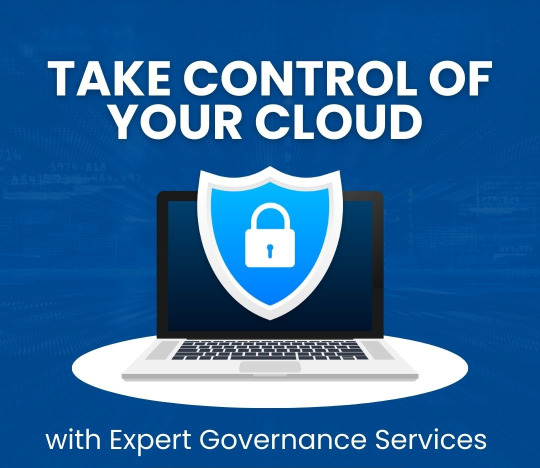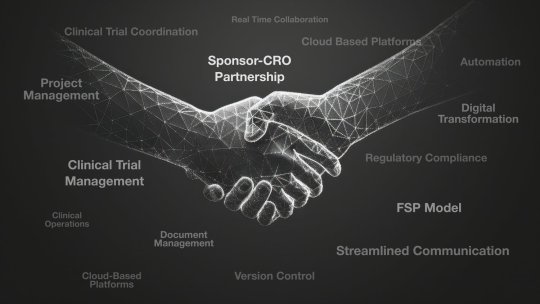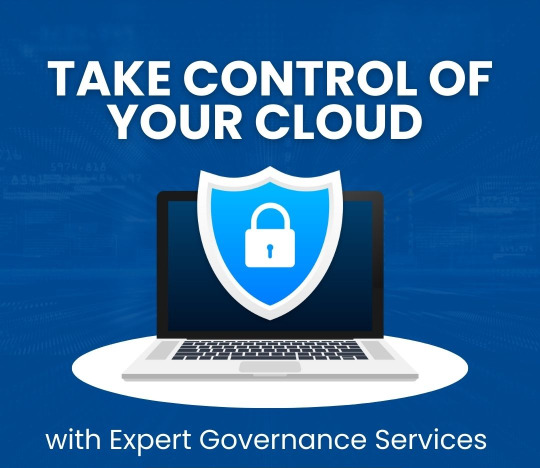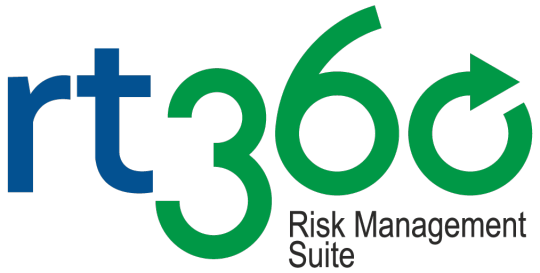#grc solution
Explore tagged Tumblr posts
Text
GRC vs Traditional Concrete – Which Is Better for Mumbai’s Climate?

In terms of architecture and development, Mumbai, a thriving coastal city, presents particular difficulties. The materials used in building constructions must be strong, long-lasting, and require minimal maintenance due to factors including high humidity, intense monsoons, salt-laden air, and temperature fluctuations.
Glass fibre reinforced concrete (GRC) and conventional concrete are two materials that are frequently contrasted in this context. However, which is more appropriate for the harsh environment of Mumbai? Let's examine it more closely.
Understanding GRC and Traditional Concrete
Cement, water, sand, and aggregates are the ingredients of traditional concrete. It has been the foundation of construction for many years and is renowned for its strength. Nevertheless, it is sometimes heavy and prone to cracking, particularly in harsh weather conditions.
In contrast, GRC is a composite material composed of water, fine aggregates, cement, and glass fibres that are resistant to alkali. These fibres provide GRC with its high tensile strength, decreased weight, and increased flexibility, making it a cutting-edge substitute for conventional concrete.
Weather Resistance in Mumbai’s Climate
Mumbai's tropical climate is marked by months of nonstop rain, excessive humidity, and scorching summer temperatures. Under such circumstances, traditional concrete frequently absorbs water, which causes spalling, cracks, and corrosion of the steel reinforcements.
GRC is far more resilient to rain and humidity because it is non-corrosive and extremely water-resistant. Over time, fewer maintenance problems arise because of its fine composition and fibre reinforcement, which stop water intrusion.
Salt and Coastal Corrosion
Another key concern in Mumbai is the salt-laden air, which accelerates corrosion in buildings near the coastline.
Traditional concrete structures, especially those with exposed steel reinforcements, are vulnerable to salt corrosion. This leads to structural weakening over time.
GRC contains no steel reinforcements, making it inherently resistant to rust and corrosion. This gives it a distinct advantage in coastal regions like Mumbai.
Aesthetic Flexibility and Design
GRC offers a wide range of design possibilities due to its lightweight and moldability. From intricate architectural facades to modern decorative elements, GRC allows for detailed customisation without compromising on strength.
Traditional concrete is heavier and more rigid, which can limit design freedom and increase structural load.
Sustainability and Longevity
GRC is eco-friendly, uses less raw material, and has a longer life span with minimal maintenance. Its lightweight nature also reduces transportation and installation energy.
Traditional concrete, while durable, often needs repairs or reinforcements over time, especially in harsh environments like Mumbai.
Final Verdict: GRC for the Win
When comparing GRC and traditional concrete for Mumbai’s challenging climate, GRC emerges as the superior choice. Its resistance to moisture, corrosion, and salt-laden air makes it ideal for coastal and humid conditions. Add to that its design flexibility, sustainability, and lower long-term maintenance, and it's easy to see why architects and builders are increasingly turning to GRC for modern construction in Mumbai.
Whether it's for cladding, facades, screens, or decorative panels, GRC offers a smart, durable, and stylish solution for Mumbai’s unique building needs.
1 note
·
View note
Text
Cloud Governance vs. Cloud Management: What’s the Difference?

As businesses accelerate their shift to the cloud, two concepts frequently come up in strategic conversations: cloud governance and cloud management. While often used interchangeably, these terms refer to very different—yet equally essential—disciplines in modern IT environments.
Understanding the distinction is critical. Organizations that confuse the two may have unsecured data, rising costs, or compliance issues. On the other hand, those who separate cloud governance from cloud management and implement both correctly can enjoy the full benefits of cloud adoption: scalability, agility, cost control, and security.
This article explores the key differences between cloud governance and management, their respective roles, and how they work together to ensure efficient, secure, and compliant cloud operations.
What Is Cloud Governance?
Cloud governance refers to the framework of policies, rules, and controls that guide how cloud resources are used within an organization. It ensures that cloud usage aligns with business goals, regulatory requirements, and risk tolerance.
Key Elements of Cloud Governance:
Policy Enforcement – Setting rules for cloud usage (e.g., who can deploy resources, and what types of workloads are allowed).
Security & Compliance – Ensuring data protection, identity management, and adherence to legal standards like GDPR or HIPAA.
Cost Governance – Monitoring and controlling spending to avoid cost overruns.
Access Control – Defining roles and permissions to prevent unauthorized access.
Auditability & Reporting – Keeping a record of who did what, when, and where in the cloud environment.
The Goal of Cloud Governance:
To create guardrails, not roadblocks. It’s about enabling innovation and cloud agility—safely and responsibly.
What Is Cloud Management?
Cloud management is the operational side of running cloud environments. It involves monitoring, optimizing, and maintaining cloud resources to ensure performance, reliability, and efficiency.
Key Components of Cloud Management:
Infrastructure Provisioning – Deploying and configuring servers, storage, databases, etc.
Monitoring & Performance Optimization – Tracking usage, availability, and latency across applications and services.
Automation – Using scripts or tools to auto-scale, update, or recover resources.
Backup & Disaster Recovery – Ensuring data is protected and recoverable.
Resource Tagging & Inventory – Keeping track of assets across multi-cloud environments.
The Goal of Cloud Management:
To keep the cloud running smoothly—minimizing downtime, improving performance, and maximizing value.
The Core Difference: Policy vs. Operations
Here’s the simplest way to separate the two:
Cloud Governance = What you should do
Cloud Management = How you do it
Governance provides the rules, while management enforces and executes the operations within those rules. Think of governance as the strategy and oversight, and management as the day-to-day execution.
Why the Distinction Matters
1. Security and Compliance
Without governance, cloud environments can quickly become a security risk. For example, developers may spin up public storage buckets without encryption or access controls. Cloud governance ensures that such actions are restricted or automatically corrected.
Cloud management, on the other hand, ensures that the security tools and updates are properly installed and running. It handles endpoint protection, patch management, and threat detection in real-time.
Together, they create a secure cloud ecosystem—governance defines the security rules, and management applies them.
2. Cost Control and Optimization
Uncontrolled cloud growth—known as cloud sprawl—is one of the most common problems in digital transformation. Governance policies can restrict who can launch resources, require cost tagging, or enforce budget limits.
Cloud management then provides dashboards and tools for tracking real-time usage, forecasting future costs, and optimizing workloads (e.g., resizing underutilized instances).
Result: Better financial accountability and reduced waste.
3. Scaling Safely
As businesses grow, so does their cloud footprint. Without governance, this can lead to inconsistencies, non-compliance, and confusion. With governance, cloud environments scale intentionally—following clear rules and templates.
Cloud management ensures that this scaling is smooth: deploying new servers, replicating configurations, and handling performance load.
Combined, they ensure scalability without sacrificing security or oversight.
Cloud Governance and Cloud Management in Practice
Let’s look at a few practical scenarios to understand how these concepts work in tandem.
📌 Scenario 1: Onboarding a New Cloud User
Governance: Policy dictates that new users must go through an approval process and receive only the minimum permissions needed.
Management: The IT team uses a management console to provision the user’s account, assign access rights, and monitor usage.
📌 Scenario 2: Launching a New Application
Governance: Policies require applications to use encrypted databases and reside in specific regions for compliance.
Management: The DevOps team uses automation to deploy infrastructure that matches those specs and monitors the app’s health.
📌 Scenario 3: Monthly Cloud Cost Review
Governance: The finance team sets budget thresholds for each department.
Management: Cloud cost management tools analyze real-time spending and generate alerts when nearing limits.
Challenges of Cloud Governance and Management
While essential, both disciplines come with challenges:
For Cloud Governance:
Defining policies that are strict enough for control but flexible enough for innovation.
Ensuring organization-wide adoption and understanding of governance principles.
Keeping policies up to date with evolving threats and regulations.
For Cloud Management:
Managing multi-cloud and hybrid environments.
Avoiding tool sprawl—using too many overlapping management platforms.
Balancing automation with the need for manual oversight in critical scenarios.
Tools That Support Both Functions
There’s a growing ecosystem of cloud-native and third-party tools that support governance and management:
Cloud Governance Tools:
AWS Organizations / Azure Policy / Google Cloud Organization Policy
CloudHealth by VMware
CloudCheckr
Prisma Cloud by Palo Alto Networks
Cloud Management Tools:
AWS CloudWatch / Azure Monitor / Google Operations Suite
Terraform / Ansible (for automation)
Datadog / New Relic (for monitoring)
ServiceNow (for cloud service management)
Many platforms now integrate governance and management features, helping IT leaders maintain visibility and control in one place.
Governance and Management in a DevOps World
DevOps practices prioritize speed, automation, and continuous delivery. But without guardrails, they can lead to chaos. That’s why integrating cloud governance into DevOps workflows is crucial.
This concept is known as “Governance as Code.”
It allows organizations to embed policies directly into the CI/CD pipeline. For example:
Automatically denying infrastructure that doesn’t meet security rules
Preventing deployments that exceed budget constraints
Triggering alerts if changes violate compliance policies
Meanwhile, cloud management continues to monitor and optimize the deployed environments post-launch.
The Future: Policy-Driven Cloud Automation
The line between governance and management will continue to blur as platforms evolve. The future lies in policy-driven automation—where governance defines the “what,” and management automatically delivers the “how.”
Imagine a scenario where:
A developer requests a new VM.
Governance policies check for compliance, budget, and security needs.
Once approved, the system auto-deploys the VM using cloud management tools.
This is the vision of intelligent, self-service, policy-compliant cloud operations.
Final Thoughts
Cloud governance and cloud management are not the same—but they are two sides of the same coin.
Governance sets the rules.
Management ensures those rules are followed—effectively and efficiently.
Together, they help organizations secure their environments, control costs, stay compliant, and scale sustainably. Ignoring one in favor of the other creates gaps. But when treated as partners in strategy, cloud governance, and cloud management form the foundation of successful cloud adoption.
As cloud usage continues to expand, businesses that understand and embrace both disciplines will be better positioned to lead in a digital-first world.
#cloud governance solutions#azure governance#grc solution#grc framework#GRC services#cloud governance framework#azure governance framework
0 notes
Text
The Advantages of Glass Fiber Reinforced Concrete (GFRC)
The new multi-use material, glass fiber reinforced concrete (GFRC), has changed the building business. GFRC is a common choice among architects, engineers, and builders because it combines the strength of glass fibres with the durability of concrete. Read more
1 note
·
View note
Text
GRC Software in Bangalore
GRC Software in Bangalore: A Must-Have for Modern Businesses
Bangalore, the Silicon Valley of India, is a thriving hub for technology and innovation. As businesses in the city continue to expand and face increasing regulatory pressures, Governance, Risk, and Compliance (GRC) software becomes an indispensable tool. GRC solutions streamline processes, reduce risks, and ensure compliance with a wide range of regulations.
What is GRC Software?
GRC software is a comprehensive platform designed to help organizations manage and mitigate risks, ensure compliance with regulations, and enhance governance practices. It integrates various aspects of risk management, compliance management, and governance into a single, unified solution.
Key Features of GRC Software
Risk Assessment: Identify, assess, and prioritize risks across the organization.
Compliance Management: Track and manage compliance with regulatory requirements, industry standards, and internal policies.
Audit Management: Streamline audit processes, document findings, and track corrective actions.
Incident Management: Respond effectively to incidents, track root causes, and implement preventive measures.
Policy and Procedure Management: Create, manage, and distribute policies and procedures to ensure consistency and compliance.
Reporting and Analytics: Generate reports, dashboards, and analytics to monitor performance, identify trends, and make data-driven decisions.
Benefits of Implementing GRC Software in Bangalore
Enhanced Risk Management: Identify and mitigate risks proactively, reducing the likelihood of costly incidents.
Improved Compliance: Ensure adherence to regulatory requirements, avoiding fines and penalties.
Streamlined Processes: Automate tasks, reduce manual effort, and improve operational efficiency.
Enhanced Governance: Establish effective governance frameworks and accountability mechanisms.
Data-Driven Decision Making: Leverage analytics to make informed decisions based on data-backed insights.
Improved Reputation: Demonstrate a commitment to ethical business practices and regulatory compliance.
Choosing the Right GRC Software for Bangalore Businesses
When selecting GRC software, Bangalore businesses should consider the following factors:
Scalability: Ensure the software can accommodate the organization's growth and evolving needs.
Customization: Look for solutions that can be tailored to specific industry requirements and business processes.
Integration: Verify compatibility with existing systems and applications.
Cloud-Based or On-Premises: Determine the deployment model that best suits the organization's infrastructure and security needs.
Cost-Effectiveness: Evaluate the total cost of ownership, including licensing fees, implementation costs, and ongoing maintenance.
GRC Software Providers in Bangalore
Bangalore is home to numerous GRC software providers, offering a wide range of solutions to cater to different business needs. Some popular options include:
MetricStream
RSA Archer
OneTrust
ISMS27001
RiskLens
By implementing GRC software, Bangalore businesses can effectively manage risks, ensure compliance, and improve their overall governance practices. This investment will not only protect the organization from legal and financial consequences but also enhance its reputation and long-term sustainability.

#grc software#operational risk management software#operational risk management solution#sop digitization#grc platform#risk and resilience#grc solution#policies and procedures management#sop management#video kyc solution
0 notes
Text
When to Redesign SAP Roles: During ECC or Post-Migration to S/4HANA or Rise with SAP
Migrating to SAP S/4HANA or adopting RISE/GROW with SAP is a strategic milestone for organizations aiming to modernize their ERP landscape. However, one critical consideration often overlooked during these transitions is the redesign of SAP roles. The timing of this redesign can significantly influence the success of the migration and the overall efficiency. Should you redesign roles during the ECC phase or wait until after the migration to S/4HANA? This blog explores the key factors driving this decision and introduces the S.M.A.R.T framework—a modern approach to SAP role redesign that ensures compliance, efficiency, and business alignment.
Understanding the Need for Role Redesign
SAP roles are pivotal in defining user access, ensuring compliance, and maintaining operational efficiency. Over time, roles in ECC systems often become bloated with unused authorizations or misaligned with current business needs. This can lead to:
Compliance Risks: Excessive authorizations increase the risk of segregation of duties (SoD) violations.
Migration Complications: Legacy roles with redundancies can complicate the migration process to S/4HANA.
Operational Costs: Since the licensing model is based on assignment and not by usage in S/4HANA and RISE, you may need to procure more licenses than required.
A role redesign ensures clean, streamlined, and compliant access structures, setting the stage for a smooth transition and efficient system post-migration.
ls.ECC vs. S/4HANA: When to Redesign Roles?
Aspect
Redesign During ECC
Redesign Post-Migration to S/4HANA
Compliance
Proactively addresses SoD conflicts and access risks.
Allows compliance alignment with new functionalities post-migration.
Migration Complexity
Simplifies migration with clean and optimized roles.
Reduces redundant effort, focusing only on relevant roles in the new system
Alignment with New Features
May require rework later to incorporate S/4HANA-specific functionalities.
Ensures roles are tailored to new modules, Fiori apps, and processes.
Timeline and Resources
Increases project timelines due to pre-migration workload.
Defers redesign efforts, potentially affecting initial system efficiency.
Business Process Analysis
Limited to existing ECC processes, with potential misalignment after migration.
Better aligned with current and optimized business processes in S/4HANA.
Redesigning SAP Roles with RISE with SAP
If you are moving to RISE with SAP, it is advisable to conduct a complete role redesign during the ECC phase. Once the migration is complete, perform a retrofit to align roles with the cloud-specific requirements introduced by RISE. This approach addresses the unique security, integration, and scalability considerations of a cloud-oriented transformation. You might have many questions at this juncture – What is the best approach? Which tools must be considered? Are there any accelerators that can be used? Can we use stock ready/ready to deploy role structures?
Challenges with Stock Ready Rulesets
Many system integrators offer pre-packaged or stock-ready rulesets as part of their role redesign services. While these rulesets might appear to save time and effort, they often come with significant challenges, making them unsuitable for many businesses. Here’s why the stock-ready approach is not recommended:
Lack of Customization: Stock-ready rulesets are designed to be generic and may not align with the specific needs of your industry or business processes. This can result in inadequate or excessive authorizations.
Compliance Risks: These pre-packaged rulesets may not fully address industry-specific compliance requirements, leaving gaps that could lead to audit findings or regulatory penalties.
Misalignment with Business Processes: Every organization has unique workflows and processes. Stock-ready rulesets may not account for these nuances, leading to inefficiencies and user frustrations.
Post-Implementation Challenges: Organizations often need to spend additional time and resources customizing these rulesets post-implementation, negating the perceived benefits of a quick deployment.
Instead of relying on stock-ready rulesets, organizations should invest in a tailored role redesign approach. This ensures that roles are aligned with specific business processes, compliance requirements, and future scalability needs, delivering long-term value and efficiency. This is where S.M.A.R.T approach/framework can be a life saver.
The S.M.A.R.T Role Redesign Framework
At ToggleNow, we leverage the S.M.A.R.T framework for SAP role redesign. This approach ensures that roles are:
Simplified: Designed to reduce complexity while maintaining operational effectiveness.
Mitigated for Risks: Focused on eliminating SoD conflicts and maintaining regulatory compliance.
Aligned with Business Tasks: Task-based roles ensure that access permissions directly support specific workflows.
Responsive to Change: Built to adapt seamlessly to future business or technical changes.
Transparent and Optimized: Designed with a focus on license optimization to eliminate unnecessary expenditures.
This framework delivers roles that are not only secure but also cost-effective and easy to manage
ToggleNow Advantage
ToggleNow brings a unique value proposition to SAP role redesign initiatives, ensuring a seamless and efficient process tailored to your business needs. Here’s why we stand out:
Customized Solutions: Unlike stock-ready rulesets, ToggleNow develops tailored role designs aligned with your specific business processes, compliance requirements, and industry standards.
Deep Expertise: With extensive experience in SAP role redesign, ToggleNow combines technical proficiency with a deep understanding of regulatory compliance and security best practices.
Innovative Tools:ToggleNow leverages proprietary tools such as Verity, Optimus and accelerators such as xPedite to streamline role redesign, risk analysis, and validation, ensuring faster project delivery.
Focus on Scalability:Our approach ensures that the roles we design are not only compliant and efficient but also scalable, adapting to your future business growth.
Proven Track Record:Trusted by leading organizations, ToggleNow has successfully delivered role redesign projects across diverse industries, enabling smoother migrations and enhanced system performance.
By partnering with ToggleNow, organizations can confidently navigate their SAP transitions, optimizing roles to drive operational excellence and long-term success.
Conclusion
The decision to redesign SAP roles during ECC or post-migration to S/4HANA or RISE with SAP depends on your organization’s priorities, resources, and timeline. Redesigning during ECC can simplify the migration process, while post-migration redesign allows alignment with new functionalities. For RISE with SAP, role redesign becomes even more critical to address cloud-specific requirements.
Moreover, organizations should avoid the pitfalls of stock-ready rulesets and opt for a customized approach that aligns with their unique requirements. By investing in a well-planned redesign, organizations can unlock the full potential of SAP S/4HANA or RISE with SAP, driving operational excellence and business growth.
Read more: https://togglenow.com/blog/redesign-sap-roles-ecc-or-s-4hana/

#SAP Risk Management#SAP access risk analysis tool#SAP GRC access control solution#SAP segregation of duties automation#SoD risk analysis for SAP
0 notes
Text
What makes GRC as a Service (GRCaaS) effective?
In today’s fast-paced business environment, organizations must effectively manage governance, risk, and compliance. This is where GRC as a Service (GRCaaS) comes into play. It simplifies these complex processes, helping businesses stay on track.
Core Components That Drive GRCaaS Effectiveness
Integration: GRCaaS seamlessly integrates with existing systems, ensuring smooth data flow and collaboration.
Real-time Monitoring: Companies can promptly address issues by continuously monitoring risk and compliance.
Scalability: GRCaaS solutions can easily adapt to changing needs, making them ideal for companies of all sizes.
Key Features of a High-Performance GRCaaS Solution
User-Friendly Interface: A simple, intuitive dashboard allows users to navigate easily.
Automated Reporting: Automated processes reduce manual efforts, saving time and minimizing errors.
Robust Security Protocols: Strong security measures protect sensitive information, building trust and confidence.
GRC as a Service (GRCaaS) streamlines governance, risk, and compliance, making it an invaluable tool for modern businesses. By harnessing its core components and features, organizations can improve efficiency, responsiveness, and security. If you’re looking to enhance your GRC strategy, consider embracing GRCaaS for effective management.
0 notes
Text
#compliance software#compliance management software#compliance solutions#governance risk and compliance#grc system
0 notes
Text
SAP Risk Management | SAP GRC RM | Governance Risk & Compliance | ToggleNow
At ToggleNow, we understand that exhaustive lists of risks can overwhelm and often become irrelevant, leading to inefficiencies. Our approach emphasizes focusing on value and core business activities in risk management. We believe that prioritizing risks impacting value and business performance is crucial, even if it means concentrating on a smaller yet more impactful segment of the business.

Our commitment lies in streamlining risk management efforts by leveraging SAP Risk Management. This comprehensive solution fosters collaboration and ensures consistency throughout your organization. We empower businesses to navigate risks effectively while concentrating efforts where risk managers can make the most significant contributions.
Read more: https://togglenow.com/services/sap-risk-management/
#Audit Management System#SAP Risk Management#SAP Risk Management Tool#SAP Risk Management services#SAP Enterprise Risk Management#SAP Risk Management Software#SAP Governance Risk and Compliance#SAP GRC Solutions Provider
0 notes
Text

Streamlining Sponsor-CRO Collaborations in Clinical Trial | Cloud Concinnity®
As the FSP model becomes more widespread, both sponsors and CROs are increasingly relying on technology to streamline clinical trial operations. While CROs traditionally made most technology-related decisions, now sponsors are also taking a more active role in selecting and leveraging technological solutions. This shift towards integrated platforms is crucial for fostering collaboration and ensuring efficient trial coordination.
This is where cloud-based platforms like Cloud ConcinnityⓇ play a crucial role. By streamlining workflows and enhancing communication, these platforms enable more efficient collaboration between sponsors and CROs. Cloud technology facilitates smoother interactions, aligning all stakeholders and driving better outcomes throughout the trial process.
#FSP model#clinical trial oversight#clinical trials#dsmb#board management software#grc tools#dmc#cybersecurity#artificial intelligence#cloud based software#cloud based solutions#sponsored#contract research organization#CRO
0 notes
Text
Ensuring Manufacturing Compliance: Key Standards and Strategies for 2024

In the competitive and highly regulated world of manufacturing, compliance is more than just a legal obligation—it's a critical component of business success. A single misstep can lead to catastrophic financial penalties, legal action, and long-lasting damage to a company's reputation. This was clearly demonstrated in the infamous Abbott Laboratories case, where the company was fined $100 million by the U.S. Food and Drug Administration (FDA) for failing to comply with updated medical device manufacturing regulations. This blog delves into the essential aspects of manufacturing compliance, providing insights and strategies to help you navigate this complex landscape.
Understanding Manufacturing Compliance
Manufacturing compliance is not just about adhering to rules—it's about ensuring that every aspect of your operation aligns with a network of regulations and internal standards critical to success. Compliance in manufacturing can be divided into two main categories:
Regulatory Compliance: This involves following laws and regulations set by governments and industry bodies, which vary depending on your industry, location, and specific business operations. Regulatory compliance ensures that your processes meet the legal standards required to avoid fines and penalties.
Corporate Compliance: This goes beyond regulatory adherence, covering your internal policies and procedures to ensure that your company operates within both external regulations and your established internal standards.
For a deeper understanding of compliance and its implications, check out GRC 101: What is GRC?.
Key Regulations and Standards in Manufacturing
Successfully managing compliance in manufacturing requires a deep understanding of several critical regulations and standards. These guidelines are crucial for ensuring product safety, operational efficiency, and legal compliance. Here are some key regulations and standards that manufacturers must keep in mind:
ISO 9001: A globally recognized standard for quality management systems, ensuring consistent product quality.
ISO 14001: Focuses on environmental management systems, helping companies minimize their environmental impact.
OSHA (Occupational Safety and Health Administration): U.S. regulations designed to ensure safe and healthy working conditions.
Good Manufacturing Practice (GMP): Essential for production and quality control in the pharmaceutical and food industries.
LEAN Manufacturing: A methodology aimed at improving efficiency by eliminating waste in production processes.
Six Sigma: A process improvement strategy focused on reducing defects and enhancing quality.
HACCP (Hazard Analysis and Critical Control Points): Designed to identify and control potential hazards in food safety management.
NFPA (National Fire Protection Association): Standards to prevent fire and explosion hazards in manufacturing environments.
CE Marking: Indicates that a product meets European safety, health, and environmental protection standards.
AS9100: A quality management system specifically tailored for the aerospace industry, incorporating ISO 9001 with additional aerospace-specific requirements.
Steps to Achieve Compliance in Manufacturing
Achieving compliance is an ongoing process that requires careful planning and execution. To tackle hidden risks and shifting regulations, here are essential steps to help manufacturers maintain compliance:
Conduct a Comprehensive Compliance Risk Assessment: Begin with a thorough assessment of potential risks in your industry, internal policies, and external standards. This will help you understand the specific compliance landscape for your manufacturing operations.
Establish Clear Compliance Objectives and Policies: Define clear, measurable objectives that align with your company's values and industry standards. Develop robust policies that guide employees and ensure they are well-communicated throughout the organization.
Implement Robust Documentation Practices: Keep detailed records of your processes, procedures, and compliance activities. Proper documentation is key to transparency and is crucial during audits or assessments.
Regular Compliance Training: Ensure your workforce has the necessary knowledge and skills. Regular training should cover relevant regulations, internal policies, and updates to compliance requirements.
Monitor and Audit Compliance Practices: Establish a system to regularly review and audit compliance practices. This allows you to identify potential issues early and make necessary adjustments.
Establish a Reporting and Communication System: Create clear channels for reporting compliance issues. Encourage open communication within the organization to address concerns promptly.
Respond Promptly to Non-Compliance Issues: When issues arise, act quickly to address them. Investigate root causes, implement corrective actions, and communicate transparently with stakeholders.
Continuously Improve Compliance Processes: Regularly evaluate and enhance your compliance processes. Stay informed about industry developments, regulatory changes, and best practices to keep your company agile and adaptive.
For more detailed insights on internal audits, check out Internal Audit Management.
The True Cost of Non-Compliance
Failing to meet compliance standards can have severe repercussions. Beyond the obvious legal and financial penalties, non-compliance can damage your company's reputation, erode customer trust, and lead to long-term business losses. The case of Abbott Laboratories is a stark reminder of the potential consequences.
For a deeper exploration of the costs associated with non-compliance, refer to The True Cost of Non-Compliance.
Conclusion
Compliance in manufacturing is a complex, ongoing challenge that demands meticulous attention to detail and a proactive approach. By understanding the key regulations and standards, implementing robust compliance practices, and staying informed about industry changes, manufacturers can safeguard their operations from the risks of non-compliance. Leveraging GRC solutions can further streamline these efforts, ensuring that your company remains compliant and competitive in a rapidly changing industry.
At iTech GRC, we specialize in streamlining risk and compliance management with our advanced solutions. Visit our website to learn more about how we can help you achieve your compliance goals.
How do you handle compliance challenges in your organization? We'd love to hear your thoughts—drop a comment below!
0 notes
Text
The construction sector continuously progresses with new materials and technologies, taking design and performance beyond imagination. One innovation that has welcomed great acceptance lately is Glassfiber Reinforced Concrete, commonly called GRC. This awesome material gives the traditional strength of concrete plus the lightweight flexibility of fiberglass, thus acting as a serious game-changer for builders and architects alike. As we list the ten major advantages of GRC usage in construction, discover how this new-age solution can gain support for structural dependability and change the perspective toward a building project. Whether huge-scale developments or small renovations, GRC knowledge could be a turning point in your forthcoming adventure. Let us see what gives GRC its eat in this over-crowded market.
1 note
·
View note
Text

GRC Solution & Services Brisbane | Cloud Governance Solutions Brisbane
Streamline compliance with expert cloud governance solutions. Leverage Azure governance frameworks and GRC services to ensure control, security, and regulatory compliance.
#cloud governance solutions#azure governance#grc solution#grc framework#GRC services#cloud governance framework#azure governance framework
0 notes
Text
Yogi GRC Product Manufacturer in Mumbai | GRC Products Supplier
Glass Fibre Reinforced Concrete (GFRC) also known as GRC is a cement based composite material, that is reinforced with alkali resistant fibres. By using al kali resistant glass fibres into cement mix, the process reinforces the material with corrosion proof sturdy fibres, which makes GRC long lasting for any construction requirement. Its lightweight nature makes the construction of walls, foundations. panels and cladding much easier and quicker. Click here to know more
#Yogi GRC Products#GRC material#GRC Solution#GRC builders#Glassfibre Reinforced Concrete#GRC Products Manufacturer#GRC Products Supplier
1 note
·
View note
Text
#grc software#operational risk management software#sop digitization#operational risk management solution#risk and resilience#grc platform#grc solution#policies and procedures management#sop management#video kyc solution
0 notes
Text
5 Hidden SAP GRC Pitfalls That Could Jeopardize Your Compliance Strategy
1. “One-Size-Fits-All” RuleSet Syndrome
Many organizations implement SAP GRC with out-of-the-box rule sets and assume they’re covered and are completely Sox/SoD compliant. The problem? Standard rule sets don’t always reflect the unique business processes and risks of an enterprise. They must be utilized as a baseline.
Example: A global company using a generic SoD rule set might flag conflicts that aren’t actually risks in their specific operations, leading to unnecessary firefighting and role redesign efforts.
What is the solution? It is always recommended to tailor the rule set to align with your business needs. Involve process owners and auditors to ensure relevance. Disable those which are not relevant and add the ones what needs to be part of the rule set. For example, your custom transaction codes.
2. Over-Reliance on Automated Controls
Yes, automation is powerful, but blindly trusting automated GRC controls without proper oversight is a recipe for disaster.
Example: Automated access reviews might seem great, but if managers are just clicking the approval button without understanding the risk, you’re inviting compliance issues.
What is the solution? Combine automation with human intelligence. Train reviewers on what they’re approving and implement periodic audits.
3. The “Too Many Firefighters” Problem
Firefighter (emergency access) access is meant for temporary, critical access. But in many companies, they become a backdoor for permanent privileged access. I’ve seen in some instances where the FFIDs have SAP_ALL, SAP_NEW assigned
Example: If every second user has firefighter access “just in case,” then what’s really being controlled?
What is the solution? Reduce firefighter usage with strict policies. Ensure that the Firefighter IDs have limited and relevant access, not SAP_ALL. Look at how often your users are asking for such access. Set expiration dates, and enforce approvals before access is granted. A detailed review is must after the usage.
4. Role Design Nightmares
Ever seen a single SAP role with 500+ transaction codes? It happens more often than you’d think. Poorly designed roles create access chaos, security risks, and audit nightmares.
Example: A company that grants “Display All” access thinking it’s harmless—only to realize some reports contain sensitive payroll data.
What is the solution? Follow a least privilege approach. Display tcodes does possess risks. Design roles based on business functions, not user demands and assumptions. And, no, giving everyone SAP_ALL is not a solution!
5. The “Check-the-Box” Compliance Trap
Many organizations treat GRC as a compliance checklist rather than a risk mitigation strategy. The result? A false sense of security.
Example: An enterprise that passes an audit but later discovers a critical access loophole exploited by an insider threat.
What is the solution? Shift from a compliance-first mindset to a risk-first approach. Ask, “What’s the real-world impact of this control?” rather than just checking off audit items.
Final Thoughts: GRC is Not Just About Tools, It’s About Mindset
SAP GRC isn’t just about implementing Access Control, Process Control, or Risk Management modules—it’s about adopting a security and compliance culture. The best GRC strategies combine technology, process rigor, and human intelligence to create a resilient, risk-aware organization.
Readmore: https://togglenow.com/blog/sap-grc-hidden-pitfalls/

#SAP Risk Management#SAP access risk analysis tool#SAP GRC access control solution#SAP segregation of duties automation#SoD risk analysis for SAP
0 notes
Text

Elevate Your Audit Process with BCT Digital's Innovative Audit Management Solutions
In today's rapidly evolving regulatory landscape, maintaining compliance and transparency is essential for the success and reputation of any organization. BCT Digital stands at the forefront of fintech innovation, offering cutting-edge Audit Management solutions designed to streamline processes, enhance efficiency, and ensure regulatory adherence with unparalleled precision.
Streamlined Audit Processes, Enhanced Efficiency
BCT Digital's Audit Management solutions are engineered to streamline audit processes and enhance operational efficiency. Our platform provides a centralized hub for managing audit activities, from planning and scheduling to execution and reporting. With customizable workflows, automated notifications, and real-time dashboards, institutions can optimize resource allocation, reduce administrative burdens, and improve overall productivity.
Comprehensive Compliance, Proactive Risk Mitigation
In an era of heightened scrutiny, compliance is non-negotiable. BCT Digital's Audit Management solutions offer comprehensive compliance frameworks tailored to meet the specific requirements of each institution. Our platform facilitates continuous monitoring of regulatory obligations, enabling institutions to identify gaps and proactively mitigate risks. By staying ahead of compliance requirements, institutions can safeguard their reputation and avoid costly penalties.
Advanced Analytics, Actionable Insights
At the core of BCT Digital's Audit Management solutions lies advanced analytics capabilities that provide actionable insights into audit findings and trends. Our platform leverages machine learning algorithms to analyze audit data, identify patterns, and uncover hidden risks. By transforming raw data into actionable intelligence, institutions can make informed decisions, drive process improvements, and enhance overall risk management strategies.
Collaborative Approach, Seamless Communication
Effective audit management requires collaboration and communication across all levels of the organization. BCT Digital's Audit Management solutions foster seamless communication and collaboration, enabling stakeholders to share information, track progress, and collaborate on audit activities in real-time. With centralized document repositories and secure communication channels, institutions can ensure transparency and accountability throughout the audit process.
Tailored Solutions for Varied Needs
Recognizing that every institution is unique, BCT Digital offers tailored Audit Management solutions to meet diverse needs across industries and sectors. Whether you're a small startup or a multinational corporation, our platform can be customized to fit your specific requirements, ensuring optimal performance and scalability.
Unwavering Support, Unparalleled Expertise
When you partner with BCT Digital, you're not just getting a software solution; you're gaining a trusted ally committed to your success. Our team of experts is dedicated to providing unparalleled support, guiding you through every step of the Audit Management implementation process and beyond. With decades of combined experience in audit and compliance, we have the knowledge and expertise to help you navigate even the most complex challenges with confidence.
Experience the Future of Audit Management
Join the ranks of leading organizations worldwide who have entrusted their audit management needs to BCT Digital. Experience the future of audit management with confidence, efficiency, and peace of mind. Contact us today to learn more about how our cutting-edge solutions can empower your institution to thrive in an ever-changing regulatory environment.
0 notes